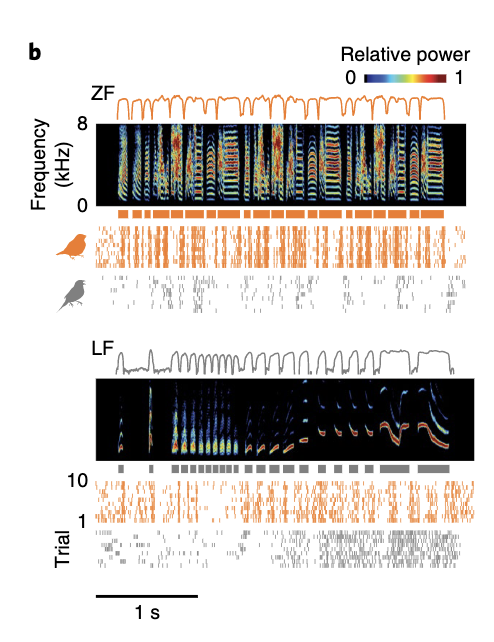
Neural mechanisms of vocal learning, production, and perception.
Research
The Woolley laboratory studies how auditory neurons, networks, and circuits extract information from vocal communication sounds in the service of social behavior, and the role of experience in auditory processing and behavior. We study songbirds because males sing to court females, females analyze songs to choose mates, the adults mate and raise offspring, and juveniles learn communication skills, all in the laboratory.
Importantly, songbirds are unique among non-human animals because juveniles learn to sing during a critical period by copying the songs of adult tutors via social interaction and practice. Songbird auditory neurons encode sound with exquisite accuracy and songbird auditory perceptual skills parallel those of humans.
Dr. Sarah Woolley holds a zebra finch in the lab's aviary.
Zebra finches are a widely used species for neurobehavioral research, particularly to study the biological basis of song development, vocal learning, and auditory processing.
Phylogeny
Listen to the song of some of the bird species in the laboratory. The song is unique to each species. At first, the young birds’ songs are messy and unstructured, a lot like the babbling of a young child. After many months of practice, songbirds refine their songs and settle on a repertoire, which often stays fixed for the rest of their lives.
From right to left: long-tailed finch (father), bengalese finch (mother), and their hybrid.
The lab has also successfully bred three species of finches and studied their first-generation hybrids. We hope that by studying the variations between species and hybrids, we will better understand the neural pathways responsible for song learning and production, and how to things go awry in the brains of hybrids.
Approaches
In the Woolley lab, we combine multiple paradigms and methodologies, from DNA sequencing and in vivo electrophysiology to mathematical modeling, to study a wide range of scientific questions.
See below some of the approaches we use in the laboratory:







